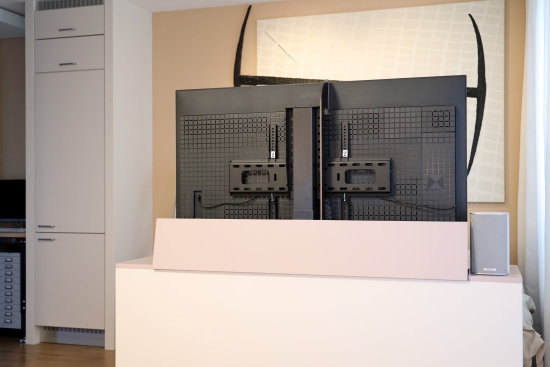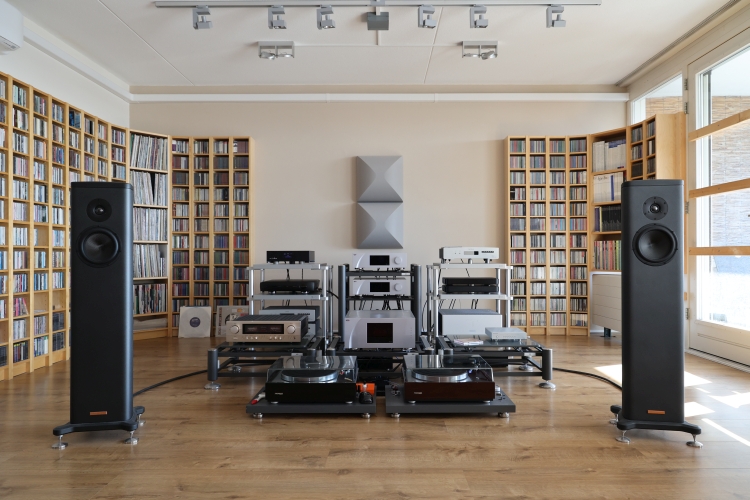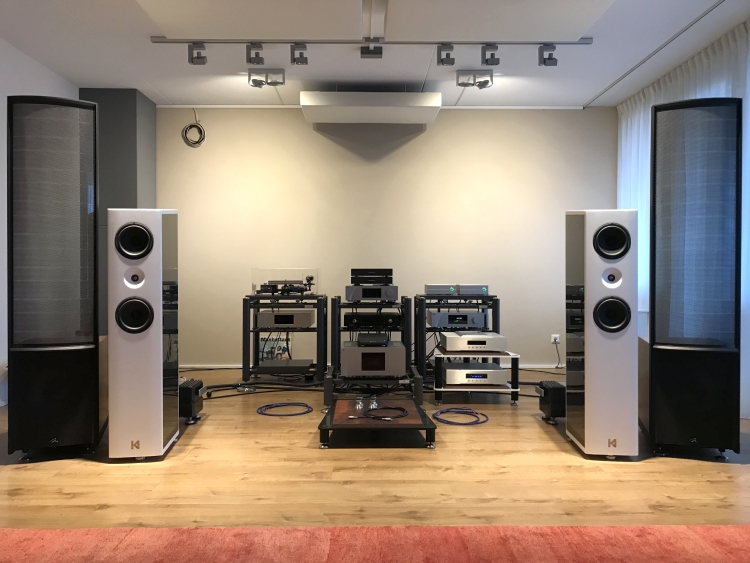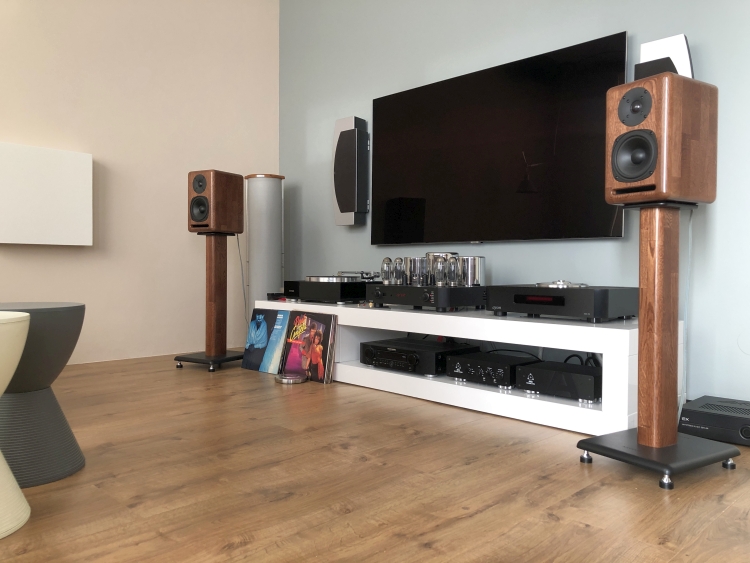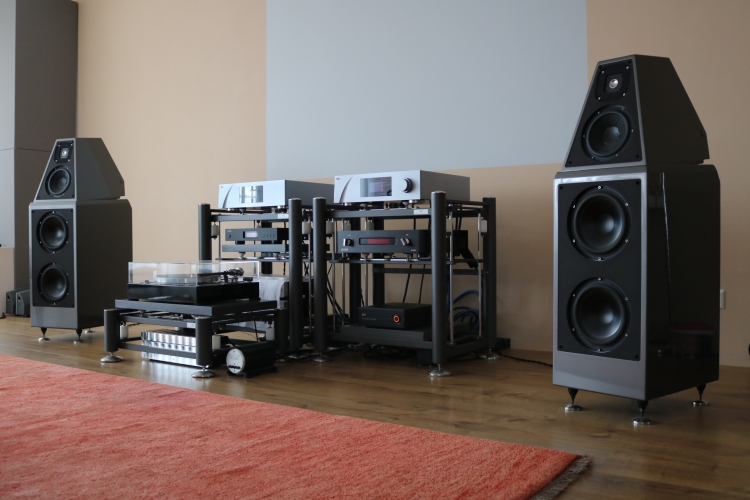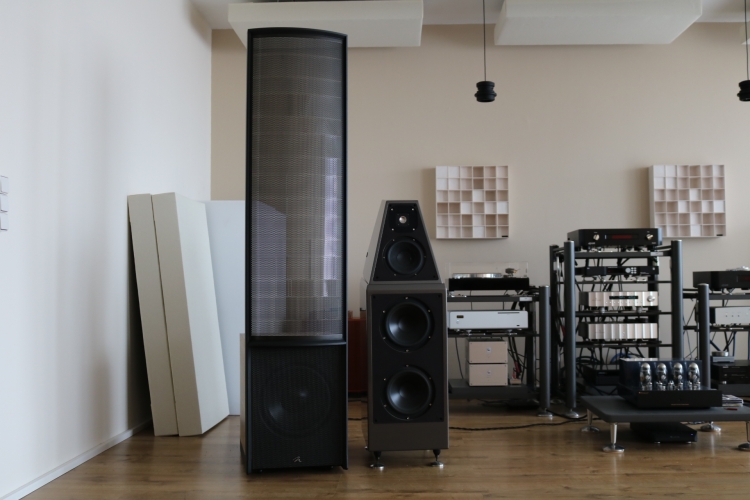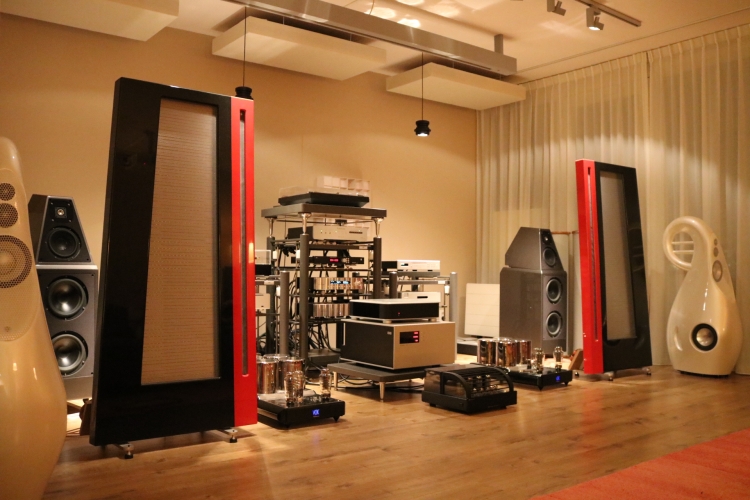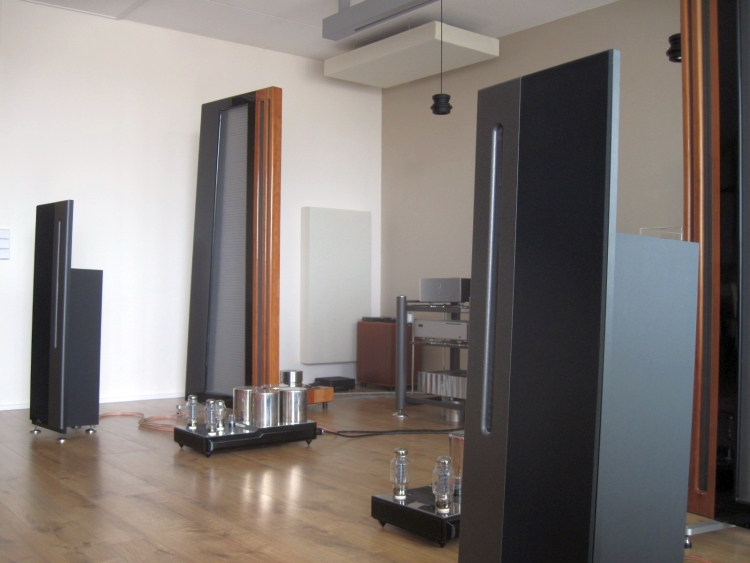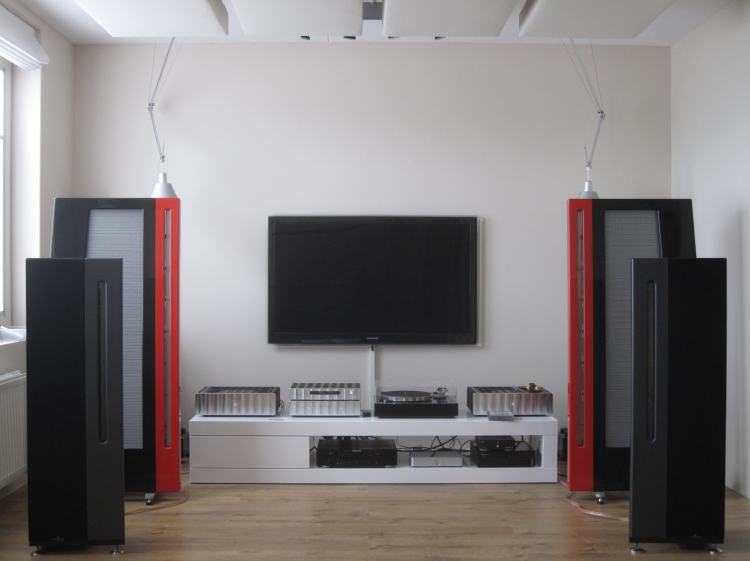HFA Audio Setup History 34 – Media Room v5 – May 2024
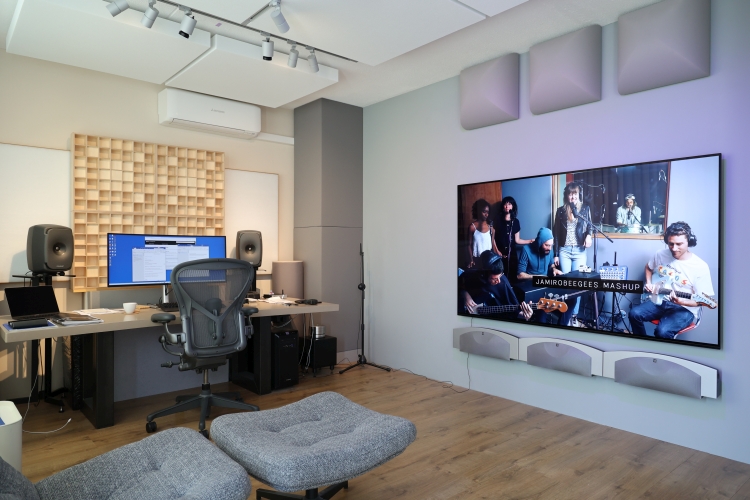
After I don’t know how many room changes, breaking down walls, re-adding them, removing others, and seemingly forever shuffling the functions of the kitchen and former hallway and bedroom areas as a result of ever-changing priorities, I think (and really hope) I have finally found the most efficient use of the available space. This is an overview of how I transformed the space into what I now call the Media Room.
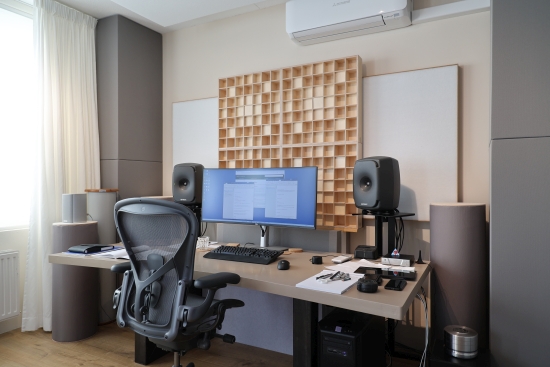
How it began
The space that now functions as a work office/Genelec audio monitoring system/Cinema room was originally two bedrooms with a hallway in between. The area has been transformed into one continuous space by removing two walls, a radiator, and a few other obstacles. It has been used for various audio system setups, usually combining a secondary audio system with a TV setup.
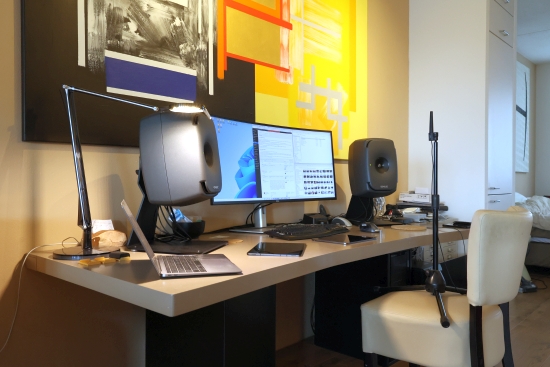
After working from home for an extended period and accepting a new job that would require me to work from home indefinitely, my priorities changed once again. I had already created more space in the kitchen area, which helped, but it was not enough. The location still felt cramped and enclosed.
By this time, I was not only spending nearly all my spare time behind the computer, but my new job required the same for the remaining time. Ultimately, I got fed up with this work location altogether.
Something had to give, so I discontinued my second audio setup and moved the desk into the now-vacant area. My goals were twofold: to have plenty of room to work in and to obtain the best possible sound from the Genelec 8341As.
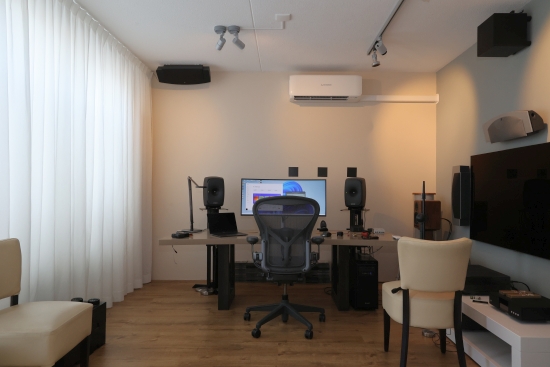
Above and below show a test setup with the desk in the former secondary audio system room. On the right is the original hallway leading to the main listening room.
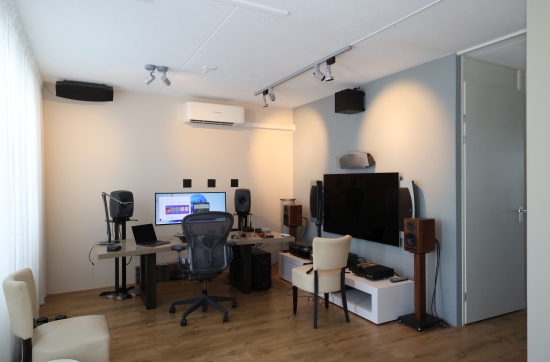
Now that the desk had lots of free space, I could extend it to allow more room on top and below so that I could stretch my feet.
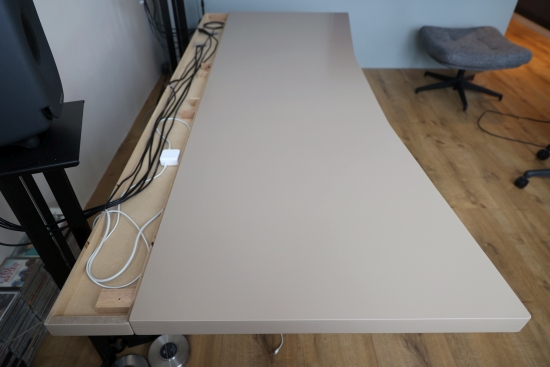
I put the extension to good use by making it into a cable trey, accessible via a separate flap on top.
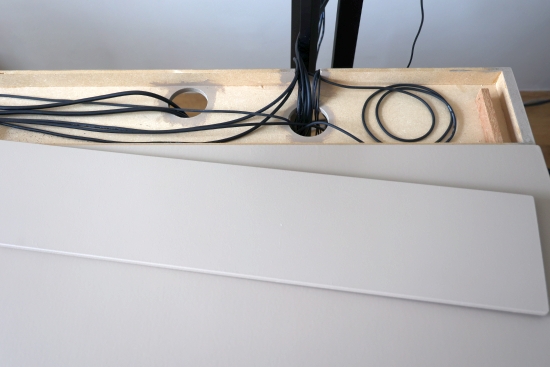
Cables from the computer were routed through holes in the bottom of the trey, exiting again via slits in the rear.
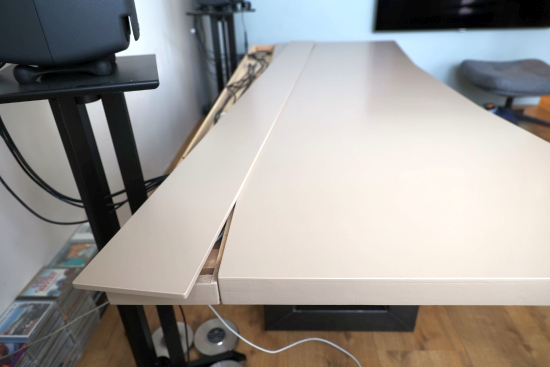
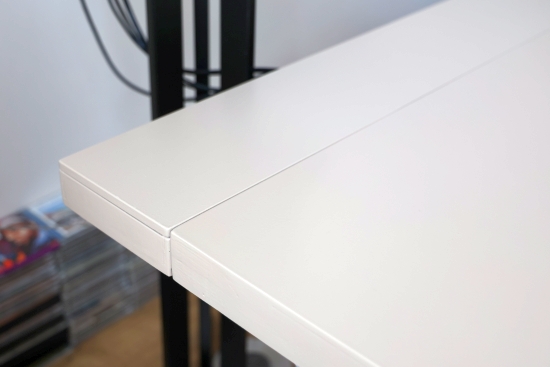
As a result of the desk relocation, there was no more room for the secondary audio system. Also, the TV function got sidetracked as the work desk overlapped a portion of the TV screen and no longer allowed room for the sofa. For a period, I accepted this by adding a comfy swivel chair and watching TV sideways using the TV’s built-in speakers. Of course, I soon grew discontent.
The solution I came up with was what I did in my earlier years when I did not want to have a TV in the stereo system: to watch TV from the bed. Since I removed the walls and no longer have a separate bedroom, I did not want to always see the huge TV so prominently in the middle of the area.
So, I made a cabinet with a TV lift.
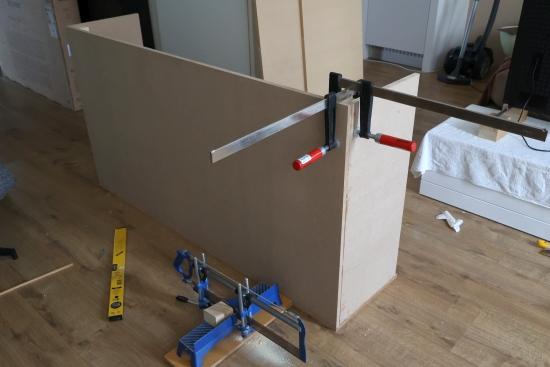
Building an MDF cabinet is simple enough, and the cost of remote-controlled elevator mechanisms has come down enormously these days to the point that everyone can afford them. Mine cost 160 euros, yet it operates as silently and smoothly as a Nakamichi cassette transport.
But, of course, I required a super smooth finish for the cabinet itself, particularly the edges, which I felt needed to have a large radius. I spent days sanding, puttying, and re-sanding until I was content.
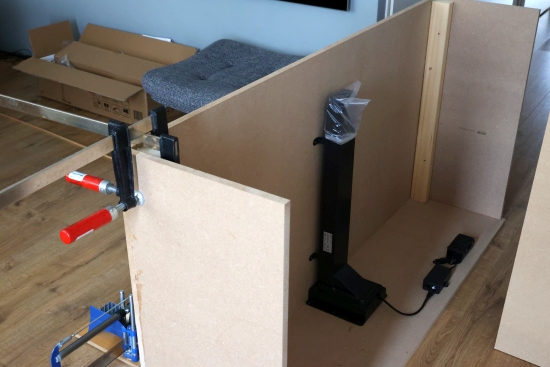
The opening mechanism proved a little tricky to solve. The lift I purchased was meant to be used with a top, fixed to the TV like a hat, that would rise up and down with the TV. To me, that was super ugly, so I modified the mechanism to work with a pivoting flap that, of course, had to be a precise fit and align fully flush.
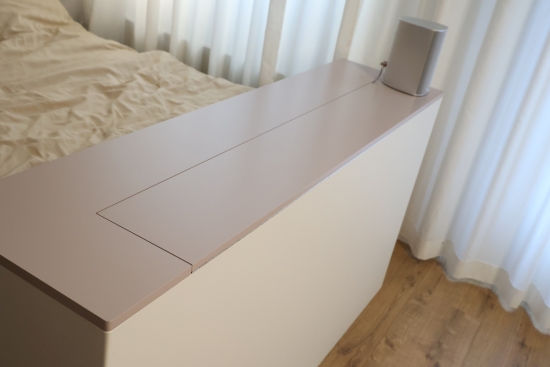
But it all worked out and, for a short while, I was super-content with the result.
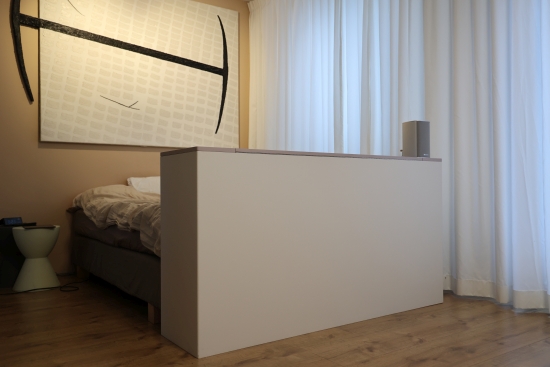
It’s a good thing not having to see this black slab of plastic dividing the space unless it is used, right?
